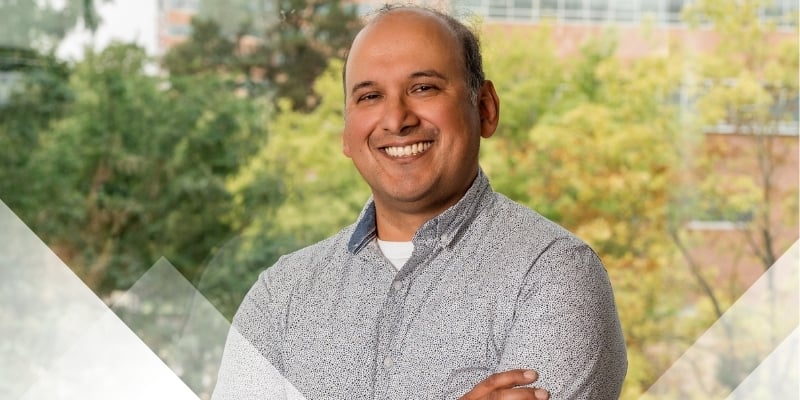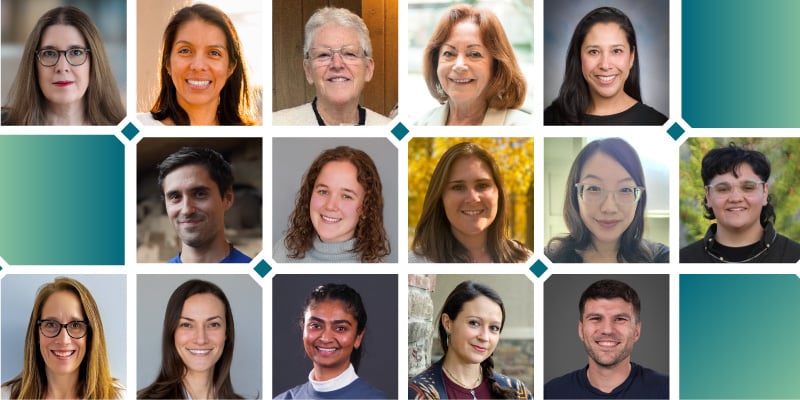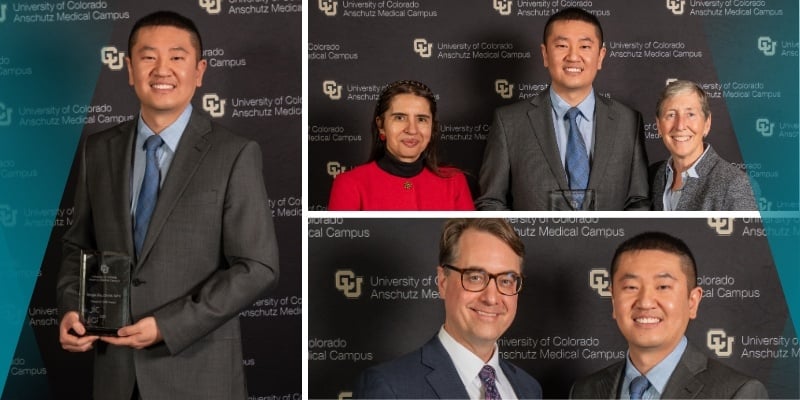Returning from a fly-fishing trip to Bristol Bay, Alaska, last July, Dr. Spero Manson stood at a baggage claim carousel at Denver International Airport. His phone rang. The caller, Dr. Jonathan Samet, dean of the Colorado School of Public Health, had good news. Manson was the recipient of a prestigious award for his work in health education.
At that moment, Manson wasn’t aware of the award. But it is one he has spent much of his life earning.
On April 8, Manson received the Elizabeth Fries Health Education Award at the annual meeting of the Society for Public Health Education (SOPHE) – held virtually because of the COVID-19 pandemic. The $25,000 award, started in 1992 by the James F. and Sarah T. Fries Foundation, goes annually to an educator who has made “a substantial contribution to advancing the field of health education or health promotion through research, program development, or program delivery.”
In Manson’s case, the Foundation recognized his “outstanding contributions to American Indian/Alaska Native health by increasing resources, improving research and training, and elevating the quality of health services to tribal communities.”
Finding a place at the table
Those words merely summarize Manson’s decades-long dedication to helping American Indian and Alaska Native people build productive, independent lives in the face of significant challenges.
Manson, an American Indian (Pembina Chippewa), is a leading voice on the University of Colorado Anschutz Medical Campus. He is director of the Centers for American Indian and Alaska Native Health at the Colorado School of Public Health and Distinguished Professor of Public Health and Psychiatry. He has also been a member of the National Academy of Medicine since 2002. He says his success is a product of advice his grandmother gave him years ago.
“She told me, ‘You have to be at the table to be fed,’” Manson recalled. “That has resonated with me throughout my personal and professional life.”
Professionally, “the table” for Manson is the world of research and academics. He found his seat with a PhD in Medical Anthropology from the University of Minnesota and an internship in psychiatry at the Oregon Health Sciences University. But while he forged an impressive career in teaching, research and committee work, Manson saw that few American Indian and Alaska Native people had achieved similar goals.
He notes that in 1998, of 35,000 National Institutes of Health (NIH) research grants and contracts awarded to program directors and principal investigators, only nine went to American Indian and Alaska Native people – and he had four of them.
“That underscored the need for increased diversity in the scientific workforce,” Manson said. “It set me on my journey to ensure that American Indian and Alaska Native scientists have a greater presence in leadership and in setting the research agenda at major medical institutions in the country, notably the NIH.”
Tangible accomplishments
With his spouse and colleague, Dr. Dedra S. Buchwald, Manson created the Native Investigator Development Program, which along with other efforts helped to substantially increase the number of early-career American Indian and Alaska Native faculty and investigators. The work helped to bolster the ranks of professionals working in the field of Indian health.
The effort paid off. Updated stats from the NIH in 2017 showed that the number of American Indian and Alaska Native principal investigators and program directors had grown to 119 – still a fraction of the total, but a major improvement compared to the tiny number 20 years before.
Manson can rightfully take credit, along with his colleagues, for a large share of that success. Between 1997 and 2020, he contributed to mentoring more than 130 American Indian and Alaska Native early-stage investigators. In the past five years, he personally mentored 15 postdoctoral and post-residency fellows. The collaborations create a self-sustaining momentum, Manson noted.
“These successive waves of colleagues have moved into positions of leadership around the country and are now mentoring, in turn, the next generation of Native investigators,” he said.
Work still to be done
He emphasized, however, that much work remains if more are to pull up a chair to the table. Early-stage American Indian and Alaska Native investigators still feel isolation at academic institutions that too often “leave them to their own devices to sink or swim” in an unfamiliar environment, Manson maintained. These institutions, he added, have been slow to recognize and encourage committee and community work, as a path that, along with peer-reviewed articles and research, can lead to promotion and tenure.
The resulting lack of diversity is a loss for both individuals and institutions, Manson said.
“In teams with diverse perspectives, the likelihood of insight is greater, the probability of problem solving is improved, and the productivity of scholarly work is enhanced,” Manson said. He added that he sees signs that leadership on the CU campus and elsewhere is recognizing this idea.
Perfect for the prize
Manson’s mentorship work “aligns neatly” with the prestige of the Fries Award, said Samet, who nominated him for the prize.
“Spero has been the point person on addressing the very pressing health problems of American Indian and Alaska Native people,” Samet said. “He’s been a pivotal role model and has done the challenging work of developing health education materials that have a chance of working with this population. That reflects his leadership.”
As Samet put it, the Fries Award “is not about writing academic papers,” but rather about recognizing work that translates to helping people in their daily lives.
“He’s a go-to person in the U.S. for issues related to American Indian and Alaska Native health and designing solutions to problems that affect this very diverse group of people,” Samet said.
Manson’s large body of work reflects that commitment. Two areas serve as examples.
Confronting the diabetes challenge
First, he was principal investigator of the Coordinating Center for the Indian Health Service’s Special Diabetes Program for Indians, launched in 1998 to combat the disproportionately high prevalence of pre-diabetes and diabetes among American Indian and Alaska Native people.
The focus of the program, Manson said, was “to recalibrate the assumptions Native people have about diabetes: namely, that obesity and subsequent [disease] are part of our destiny. We wanted to instill in people a sense of possibility. And success followed.”
The program aimed to decrease the incidence of diabetes among those at highest risk and lower the risk of complications, especially cardiovascular disease, among those with diabetes. The Special Diabetes Program for Indians recruited 20,000 participants from 160 tribal communities with the aim of identifying evidence-based practices to combat the disease.
The program paid off with sharp reductions in the number of people likely to develop diabetes and those with significant risk factors for the disease, such as smoking and high blood pressure. It is now an Indian Health Service fixture and has also helped to decrease the prevalence of end-stage renal disease, another life- and resource-draining disease, Manson said.
“The program is an example of good science that has had clear, meaningful local benefits,” he said. “That’s the best combination.”
Mental health emphasis and help
Manson’s work also focused on addressing mental health issues among Native people. As principal investigator for the Managing Depression in American Indian Primary Care project, Manson focused on connecting American Indian and Alaska Native people to behavioral health resources through their primary care providers.
The project launched at the Southcentral Foundation on the Alaska Native Medical Campus in Anchorage, Alaska, a medical home serving more than 65,000 Native people each year. The goal: break the stigma attached to high rates of post-traumatic stress syndrome, depression, anxiety and suicide in this community.
Manson and his colleagues recognized that primary care providers (PCPs) who build trust and confidence with their patients could help do that. Their solution: a six-question intake form focusing on each patient’s emotional and psychological health. With a certain number of “yes” responses, PCPs asked patients further questions and personally introduced those who consented to seeing a master’s-level behavioral health consultant. These professionals conducted motivational interviewing and set up those who need it with additional help through telephone contacts or outpatient treatment.
The team-based approach has helped to screen, manage and triage some 100,000 patients “with remarkable success,” Manson said. The concept has been disseminated to more than 10 other Indian Health Programs, he added, both in Alaska and the lower 48 states. The State of Alaska also revised its CPT codes to ensure that the behavioral health services are funded.
This work provides only a glimpse of the many accomplishments and contributions that spurred the Fries Foundation to recognize Manson. He continues to define success in the faces of those who follow.
“I started 43 years ago without role models in public health or otherwise,” Manson reflected. “Now generations of Native scholars have role models that they can look to and say, ‘There is somebody who looks, talks and acts like me. Somebody who has found this journey to be a rewarding one. Somebody who suggests I have a pathway to success that I can couple with my mastery of skills.”






